Hawthorn
[Medicinal] The ripe fruit of the tree or large shrub Crataegus pinnatifida Bge. Var. major N.E. Br. of the Rosaceae family, Crataegus pinnatifida Bge. or wild hawthorn C. cuneata Sieb. et Zucc.
[Nature and flavor and meridians] Sour, sweet, slightly warm. Enters the spleen, stomach, and liver meridians.
[Effects] Digestion and elimination of stagnation, promoting blood circulation and removing blood stasis.
[Clinical application] 1. Used for food stagnation
Hawthorn tastes sour and sweet, has good digestion power, and is a commonly used medicine for digestion of food stagnation, especially for digestion of greasy meat. In clinical application, it is often used in combination with wheat teeth and six-curd; if abdominal pain and diarrhea are caused by food injury, 10 grams of charred hawthorn can be ground into powder and taken with boiled water, which has the effect of digestion and diarrhea.
2. Used for abdominal pain caused by postpartum stasis and lochia
This product has the function of promoting blood circulation and removing blood stasis. It is used to treat abdominal pain caused by postpartum stasis and lochia. It is often used in combination with angelica, Chuanxiong, and motherwort.
[Prescription name] Scorched hawthorn, charred hawthorn meat (fried until black outside and dark brown inside), raw hawthorn, raw hawthorn meat (washed and dried), honey-roasted hawthorn charcoal (take hawthorn charcoal and stir-fry with refined honey)
[General dosage and usage] 3-10 grams, decocted and taken.
[Example of prescription] Baohe Pill (Danxi Xinfa) Hawthorn, Liuqu, Poria, Tangerine Peel, Radish Seed, Forsythia, Pinellia. Treat food stagnation, abdominal pain and diarrhea.
This product is the dried mature fruit of the plant Crataegus pinnatifida Bge, var.major N.E.Br: or Crataequs pinnatifida Bge, of the Rosaceae family. Harvest in autumn when the fruit is ripe
Slice and dry.
[Propriétés]
This product is a round piece, wrinkled and uneven, 1~2.5cm in diameter and 0.2~0.4cm thick. The outer skin is red, wrinkled, and has small grayish white spots. The flesh is dark yellow to light brown. The cross-section of the middle part has 5 light yellow pits, but most of the pits have fallen off and are hollow. Short and thin fruit stalks or calyx remnants can be seen on some slices. The smell is slightly fragrant, and the taste is sour and slightly sweet.
[Identification]
(1) The powder of this product is dark red-brown to brown. The stone cells are scattered or in groups, colorless or light yellow, polygonal, oblong or irregular, 19~125um in diameter, with obvious pores and layers, and some cell cavities contain dark brown substances. The surface view of the epidermal cells of the fruit skin is round or polygonal, with slightly thick walls, and the cell cavity often contains reddish brown or yellowish brown substances. Calcium oxalate crystals or clusters are stored in the thin-walled cells of the flesh.
(2) Take 1g of the powder of this product, add 4ml of ethyl acetate, ultrasonically treat for 15 minutes, filter, and take the filtrate as the test solution. Take another tartaric acid reference substance, add methanol to make a solution containing 1mg per 1ml, as the reference solution. According to the thin layer chromatography method (General Rule 0502), take 4μ1 of each of the above two solutions, spot them on the same silica gel G thin layer plate, use toluene-ethyl acetate-formic acid (20:4:0.5) as the developing agent, develop, take out, dry, spray with sulfuric acid ethanol solution (3→10), and heat at 80℃ until the spots are clearly colored. In the chromatogram of the test product, the same purple-red spots appear at the corresponding position of the chromatogram of the reference substance; when placed under ultraviolet light (365nm), the same yellow light spots appear.
[Inspection]
Water content shall not exceed 12.0% (General Rule 0832 Method 2).
Total ash content shall not exceed 3.0% (General Rule 2302). Heavy metals and harmful elements are determined according to the lead, cadmium, arsenic, mercury and copper determination method (General Rule 2321 atomic absorption spectrophotometry or inductively coupled plasma mass spectrometry). Lead shall not exceed 5mg/kg; cadmium shall not exceed 1mg/kg; arsenic shall not exceed 2mg/kg; mercury shall not exceed 0.2mg/kg; copper shall not exceed 20mg/kg.
[Extrait]
Determine according to the hot leaching method under the alcohol-soluble extract determination method (General Rule 2201), using ethanol as the solvent, and shall not be less than 21.0%.
[Détermination du contenu]
Take about 1g of the fine powder of this product, weigh it accurately, add 100ml of water accurately, soak at room temperature for 4 hours, shake from time to time, and filter. Accurately measure 25ml of the filtrate, add 50ml of water, add 2 drops of phenolphthalein indicator solution, and titrate with sodium hydroxide titration solution (0.1mol/L) to obtain. Each 1ml of sodium hydroxide titration solution (0.1mol/L) is equivalent to 6.404mg of citric acid (C6HgO7).
This product is calculated on the basis of dry product, and the organic acid content is calculated as citric acid (C6H8O7), which shall not be less than 5.0%.
Morceaux de décoction
[Traitement]
Clean hawthorn and remove impurities and fallen cores.
Stir-fried hawthorn Take clean hawthorn and stir-fry it according to the stir-frying method (General Rule 0213) until the color becomes darker.
[Propriétés]
This product is shaped like hawthorn slices, with yellow-brown flesh and occasional burnt spots. It has a fresh aroma and tastes sour and slightly sweet. [Content determination]
Same as medicinal materials, the organic acid content is calculated as citric acid (C6HgO7), which shall not be less than 4.0%.
[Identification] [Inspection]
(Water content) Same as medicinal materials.
Scorched Hawthorn Take clean hawthorn and stir-fry it according to the stir-fry method (General Rule 0213) until the surface is burnt brown and the inside is yellow-brown.
[Propriétés]
This product is shaped like hawthorn slices, with a burnt brown surface and yellow-brown inside. It has a burnt aroma.
[Détermination du contenu]
Same as the medicinal material, the organic acid contained is calculated as citric acid (C6H8O7), not less than 4.0%.
[Identification][Inspection]
(Water content) Same as the medicinal material.
[Properties and meridians]
Sour, sweet, slightly warm. It enters the spleen, stomach, and liver meridians.
[Fonctions et indications]
Digestion and stomach, promote qi and dissipate blood stasis, clear turbidity and reduce fat. It is used for meat stagnation, stomach fullness, diarrhea and abdominal pain, blood stasis amenorrhea, postpartum blood stasis, heart and abdomen stabbing pain, chest pain, hernia pain, and hyperlipidemia. Scorched Hawthorn has enhanced digestion and stagnation effects. It is used for meat stagnation and diarrhea.
[Utilisation et dosage]
9~12g. 【Storage】
Placer dans un endroit aéré et sec pour éviter les mites.
Introduction to Hawthorn
【Alias】Hawthorn, hawthorn, hawthorn, rat check, sheep hawthorn, red claw fruit, tangerine hawthorn, red jujube, mountain red fruit, sour jujube, snot ball, persimmon hawthorn, mountain fruit, hawthorn, monkey hawthorn, azalea fruit, sea red, sour plum, mountain pear, sour check, wild hawthorn, also known as: small-leaf hawthorn, mountain fruit
【Chinese Pinyin】shan zha
【Ingredients】
Contains epicatechin [(-)-epicatechin], quercetin, hyperin, chlorogenic acid, crataegolic acid, citric acid, amygdalin, etc.
【Processing and Collection】
Pick the fruit when it is ripe in autumn. After the hawthorn is harvested, it is cut into thin slices with a thickness of 1.5 to 3 mm and dried immediately. After the wild hawthorn is harvested, it can be dried in the sun, or pressed into a cake shape and then dried in the sun. Commercial hawthorn slices are called “Northern Hawthorn”; wild hawthorn is called “Southern Hawthorn”.
[Medicinal Material Identification]
① Northern Hawthorn
It is the fruit of the plant hawthorn, which is spherical or pear-shaped, with a diameter of about 2.5 cm. The surface is dark red, shiny, and covered with grayish-white fine spots; there are persistent calyx at the top and fruit stalk remnants at the base. The commercial product is often a 3-5 mm thick cross-section, which is mostly curled and uneven, with dark yellow to light brown flesh. 5-6 light yellow seeds can be seen on the cut surface, and some seeds have fallen off; short fruit pegs or concave calyx remnants can be seen on some slices. It has a slight fragrance and tastes sour and slightly sweet. Large, red skin, and thick flesh are preferred.
Mainly produced in Shandong, Hebei, Henan, Liaoning and other provinces. It is also produced in Shaanxi, Shanxi and Jiangsu.
②Southern Hawthorn
It is the fruit of wild hawthorn, which is spherical, 0.8-1.4 cm in diameter, and sometimes flattened into a cake shape. The surface is gray-red, with fine lines and small spots, a concave top, a slightly protruding edge, and a remnant of the fruit stalk at the base. It is hard, with a large core, thin flesh, and brown-red. It has a slight smell and tastes sour and slightly astringent. The ones with uniform size, red color, and firm texture are the best.
It is mainly produced in Jiangsu, Zhejiang, Yunnan, Sichuan and other places.
In addition, the fruits of the following plants of the same genus are also used as hawthorn medicine in a few areas.
①Shanlihong
The leaves are broadly ovate, with 3-5 pinnate deep cracks. The fruit is nearly spherical, about 1.5 cm in diameter, and red. It is distributed in Northeast China, North China, Shaanxi, Shandong, Jiangsu and other places.
②Hubei Hawthorn
The leaves are ovate to oblong-ovate, with 3-5 lobes above the middle; the thorns are 1.5 cm long; the fruit is spherical, about 1-2.5 cm in diameter, black-red, with obvious small spots. Distributed in central my country and Shaanxi and Jiangsu.
③Liaoning Hawthorn
The leaves have 3-5 lobes at the tip, the base is wedge-shaped, the anthers are light red or purple, and the fruit is bright red. Distributed in Northeast China, Shanxi, Inner Mongolia, Xinjiang and other places.
④Yunnan Hawthorn
The leaves are ovate-lanceolate or ovate-elliptical, often unbroken, with serrated edges; the fruit is nearly spherical, dark red or yellow with reddish-brown halos. Distributed in Southwest China, Guangdong, Guangxi and other places.
【Pharmacological effects】
1. Promoting digestion Hawthorn contains lipase, which can promote fat digestion, increase the secretion of gastric digestive enzymes, and promote digestion. It has a certain regulatory effect on gastrointestinal function, inhibits the hyperactive rabbit duodenal smooth muscle, and has a mild enhanced contraction effect on the relaxed rat gastric smooth muscle. The extract and aqueous solution of hawthorn acid have a significant inhibitory effect on the contraction of isolated gastrointestinal smooth muscle of rabbits and mice induced by acetylcholine and Ba\2, and have a contraction-promoting effect on the gastric smooth muscle of rats in a relaxed state.
2 Effects on the cardiovascular system (1) Effects on the heart Hawthorn acid extract can enhance the contraction force of the heart of toads in vivo and in vitro, and the duration is long. Hawthorn acid can restore the beating of the heart of toads that are tired and weak. The triterpene acids contained in hawthorn can improve coronary circulation and compensate for coronary artery failure, achieving a cardiotonic effect. Hawthorn preparations can cause significant and lasting dilation of the coronary arteries in the heart of guinea pigs and enhance cardiac capacity. 4g/kg of hawthorn extract was injected intravenously into guinea pigs for 6 consecutive days, which had a certain protective effect on myocardial damage caused by isoproterenol. Hawthorn can increase coronary flow, reduce myocardial oxygen consumption, and have a protective effect on myocardial ischemia and hypoxia. The intravenous injection of yam extract and total flavonoids into dogs can increase coronary blood flow by 37.5%, and myocardial oxygen consumption increases slightly at first, but then gradually decreases. Yam flavonoids can reduce the scope of myocardial infarction and alleviate S-T segment changes in the experimental acute myocardial infarction model. Yam fluid extract has a certain protective effect on acute myocardial ischemia caused by posterior pituitary hormone and isoproterenol in animals. After feeding dogs with yam (containing procyanidin oligomers), their left ventricular blood flow can increase for several hours, and the maximum increase can reach 70% of the normal blood flow. Intravenous injection of procyanidin oligomers into cats can also increase their cardiac blood flow in a dose-dependent manner and slightly reduce arterial blood pressure. Hawthorn extract has a certain inhibitory effect on arrhythmia caused by the posterior pituitary cord. Triterpenoid acids can increase coronary blood flow, improve myocardial sensitivity to the effects of cardiac glycosides, increase cardiac output, reduce myocardial irritability and conductivity, and have anti-ventricular fibrillation, atrial fibrillation and paroxysmal arrhythmia effects.
(2) Antihypertensive effect Experiments have shown that hawthorn has a long-lasting antihypertensive effect. Intravenous administration of hawthorn ethanol extract can slowly reduce the blood pressure of anesthetized rabbits for 3 hours. Intravenous injection of hawthorn total flavonoids 10mg/kg can reduce the blood pressure of cats by 40%, maintaining for 5-10 minutes. Its total extract also has a relatively obvious central hypotensive effect on rabbits and cats. Intravenous injection, intraperitoneal injection, and duodenal administration of northern hawthorn flavonoids, triterpenes and hydrolyzates have shown varying degrees of antihypertensive effects on the blood pressure of anesthetized cats. The blood pressure reduction rate of hawthorn hydrolyzate 20mg/kg intraperitoneal injection, 5-25mg/kg intravenous injection, respectively, was 26%, 32.5%-44.5%; hawthorn flavonoids 25mg/kg, 50mg/kg intraperitoneal injection, 12.5mg/kg, 25mg/kg intravenous injection, 100mg/kg, 150mg/kg intraduodenal administration, the blood pressure reduction rate was 45.3%, 66.6%, 52%, 30%, 38.1%, 39.2%, respectively, and the maintenance time was 240min, 130min, 100min, 81min, 540min, 540min. Hawthorn triterpene acid has the strongest antihypertensive effect in the range of 20-40mg/kg, and the antihypertensive effect does not increase accordingly when the dose is increased. When hawthorn flavonoids and triterpenic acid hydrolysates were compared by intravenous injection at the same dose (25 mg/kg), triterpenic acid had the most obvious antihypertensive effect; but the dose of flavonoids that produced a significant antihypertensive effect was the lowest.
3. Lipid-lowering effect Oral administration of hawthorn plant extract and alcohol extract at 0.5 mg/kg can increase the proportion of lecithin in the blood of rabbits with atherosclerosis and reduce the deposition of cholesterol and lipids in organs. Oral administration of southern hawthorn powder has the effect of reducing serum total cholesterol and β-lipoprotein in experimental hyperlipidemia rabbits, and the reduction value of serum β-lipoprotein is similar. 15% and 30% hawthorn extracts have a lipid-lowering effect on young rats, among which 30% hawthorn extract is more significant. After guinea pigs take hawthorn decoction, they have an inhibitory effect on the activity of cholesterol-containing enzymes, and can reduce the activity of hydroxymethylglutarylase A reductase in liver cell microsomes and small intestinal mucosa by about 70% and 67%, respectively. Shanlihong water extract can significantly reduce serum total cholesterol content, and its effect is significantly greater than pantethine, and can significantly increase serum HDL-C, HDL2-C, and HDL3-C concentrations. Its effect may be achieved by increasing the concentration of HDL and its subcomponents in serum and increasing cholesterol excretion.
4. Antioxidant effect Hawthorn water extract can scavenge O/2 free radicals, inhibit lipid peroxidation in mouse liver, and reduce O/2-induced hyaluronic acid depolymerization.
5. Effect on immune function The injection made by decoction and alcohol precipitation of hawthorn was subcutaneously injected for 9 consecutive days, which can significantly enhance the serum lysozyme activity, serum hemagglutination antibody titer, heart blood T lymphocyte E rosette formation rate and T lymphocyte transformation rate of rabbits, indicating an immune enhancement effect.
6. Antibacterial effect Hawthorn has a strong antibacterial effect on Shigella dysenteriae, Shigella flexneri, Shigella sonnei, etc.; against Staphylococcus aureus and group B streptococci. Escherichia coli, Proteus, Bacillus anthracis, Corynebacterium diphtheriae, Salmonella typhi, Pseudomonas aeruginosa, etc. also have antibacterial effects; generally, the effect on Gram-positive bacteria is stronger than that on Gram-negative bacteria.
7. Anti-cancer effect Under the pH conditions of gastric juice, hawthorn extract can eliminate the precursors of synthetic nitrosamines, that is, it can block the synthesis of nitrosamines. Hawthorn extract has a significant blocking effect on the synthesis of methylbenzyl nitrosamine in rats and mice. The acetone extract of hawthorn has a significant inhibitory effect on the mutagenic effect of aflatoxin B1-induced TA98 frameshift type and TA100 base substitution mutants. The experiment showed that hawthorn has a significant inhibitory effect on the mutagenic effect of aflatoxin BI. It shows that hawthorn may be meaningful in preventing liver cancer.
8. Other effects Hawthorn 2.5g/kg intraperitoneal injection can significantly prolong the duration of pentobarbital sodium sleep in mice. Hawthorn has the effects of contracting the uterus, promoting uterine recovery, and relieving pain.
9. Toxicity The LD50 of the polymerized flavanoid components of hawthorn for intraperitoneal and subcutaneous injection in mice is 130mg/kg and 300mg/kg respectively; 10% hawthorn extract was orally administered to male rats and mice, and soon sedation occurred, and 30 minutes later, the mice died of respiratory failure, the LD50 of mice was 18.5ml/kg, and the LD50 of rats was 33.8ml/kg; 10% hawthorn total saponins also did not cause hemolysis in rabbits.
[Traitement]
Hawthorn: Pick out impurities and sieve out the core.
Fried hawthorn: Take the cleaned hawthorn, put it in a pot and fry over a slow fire until the outside turns light yellow, take it out and let it cool. Burnt hawthorn: Take the cleaned hawthorn, put it in a pot and stir-fry it over high heat until the outside is burnt brown and the inside is yellowish brown. Spray water on it, take it out and dry it in the sun. Hawthorn charcoal: Take the cleaned hawthorns, put them in a pot and stir-fry them over high heat until the outside is charred black, but they must be preserved. Spray clean water on them, take them out and dry them in the sun.
“Compendium”: “After the frost in September, take the ripe hawthorn fruit, remove the core, and expose it to dryness. Or steam it, remove the core, pound it into cakes, and use it after drying.”
【Function Indications】
Eliminate food accumulation, disperse blood stasis, and drive away tapeworms. It can be used to treat flesh accumulation, lumps, phlegm, fullness, acid swallowing, diarrhea, intestinal wind, lumbago, hernia, pillow pain in postpartum infants, endless lochia, and stagnant feeding in infants. It promotes digestion, strengthens the stomach, promotes qi and dissipates blood stasis. It is used for meat stasis, gastric distension, diarrhea and abdominal pain, blood stasis and amenorrhea, postpartum stasis, tingling pain in the heart and stomach, hernia pain, and hyperlipidemia.
①Tao Hongjing: “Boil the juice to wash the paint sores.”
② “Tang Materia Medica”: “The juice is mainly beneficial for washing hair and sores and itching on the body.”
③”Compendium of Materia Medica”: “Cure dysentery and back pain.”
④”Lu Yanyan Materia Medica”: “Can digest food.”
⑤ “Daily Materia Medica”: “Resolves food accumulation, relieves qi stagnation, strengthens the stomach and widens the diaphragm, and eliminates blood and qi blockages.”
⑥ “Southern Yunnan Materia Medica”: “Eliminates stagnation of meat and lowers Qi; treats acid swallowing and accumulation of lumps.”
⑦ “Materia Medica Mengquan”: “Removes qi knots and cures hernia.”
⑧Ning Yuan’s “Shi Jian Materia Medica”: “Resolves blood clots, qi clots, and activates blood circulation.”
⑨ “Compendium”: “Changes diet, eliminates meat accumulation, syndromes of lumps, phlegm and drink, fullness, acid swallowing, blood stagnation, pain and swelling.”
⑩ “Compendium of Materia Medica”: “Cure spleen deficiency and damp-heat, eliminate food and eliminate accumulated food, and facilitate defecation.”
⑾”Compendium of Materia Medica”: “Apply it to frostbite.”
【Sex and taste】
Sweet and sour, slightly warm.
① “Tang Materia Medica”: “It tastes sour, cold, and non-toxic.”
②”Daily Materia Medica”: “It tastes sweet and sour, non-toxic.”
③ “Materia Medica Mengquan”: “It tastes sweet and pungent, has calm Qi, and is non-toxic.”
④ “Compendium”: “Sour, sweet, slightly warm.”
Enters the spleen, stomach and liver meridians.
① “Explanation of the medicinal properties of Lei Gong Pao”: “enters the spleen meridian.”
② “Compendium of Materia Medica”: “Enter the Foot Yangming and Taiyin Meridians.”
③”Medicine of Medicine”: “Enter the spleen and liver meridians.”
④ “Compendium of Materia Medica”: “Start with Taiyin Lung Meridian and Foot Jueyin Liver Meridian.”
【Utilisation et dosage】
Oral administration: decoction, 2 to 4 qian; or take into pills or powder. External use: boil in water and wash or pound for application.
【Taboo】
People with weak spleen and stomach should take it with caution.
① “Compendium”: “Eating too much raw food will make people noisy and make people hungry, and it will damage teeth. It is especially unsuitable for people with dental caries.”
② “Compendium of Materia Medica”: “For those with spleen and stomach deficiency and stagnation, it should be administered together with tonics, and it should not be overused.”
③ “Depei Materia Medica”: “It is contraindicated for patients with qi deficiency and loose stools and spleen deficiency who refuses to eat. Those who take ginseng should avoid it.”
④ “Suixiju Diet Manual”: “Eating too much consumes energy, damages teeth, and makes you prone to hunger. It should be avoided on an empty stomach and in weak people or those who are weak or sick.”
[Storage] Store in a ventilated and dry place to prevent moth.
[Side effects] Acute toxicity test: 100% hawthorn injection (water-extracted alcohol sediment), the LD50 for mice IV is 1.042ml/kg.
【meridian return】meridian return_spleen meridian
[Remarks] The following four fruits of the same genus of plants are also used as wild hawthorn for medicinal purposes. 1. The fruits of Crataegus kansuensis Wils. in Gansu are also made into hawthorn and used as medicine. This species is characterized by many branch thorns, cone-shaped, up to 1.5 cm long, broad oval leaves, 4 to 6 cm long, with 5 to 7 pairs of shallow lobes, truncated or wide wedge-shaped base, sharp and heavily serrated edges, umbrella There are 8 to 18 flowers in the inflorescence, and the total pedicel and pedicel are hairless; the corolla is white. There are 2 to 3 small nuclei, and there are dents on both sides of the inner surface. Born in the shade of hillsides and in mixed woods. Distributed in Shanxi, Shaanxi, Gansu, Sichuan and Guizhou provinces. 2. Liaoning Hawthorn Crataegus sanguinea Pall. The fruit is also used as hawthorn for medicinal purposes. The spines are short and thick, about 1 cm long or spineless. The leaves are broadly ovate or prismatic, 5 to 6 cm long, with 3 to 5 pairs of shallow lobes, an acute apex, a wedge-shaped base, blunt and heavily serrated, and scattered pubescence on both sides. The diameter of the fruit is about 1 cm, with 3 small cores, 5 sparse cores, and dents on both sides. Born in mountainous forests. Distributed in Northeast China, Inner Mongolia, Xinjiang and other places. 3. Hubei Crataegus hupehensis Sarg. Its fruit is hawthorn in Henan, Shaanxi, Jiangsu, Hubei, Jiangxi and other provinces. 4. Crataegus scabrifolia (Franch.) Rehd. Its fruit is known as hawthorn in Guangdong, Yunnan and other places. In addition, those mistakenly used as hawthorn in Sichuan and other places include Malusyunnanensis schneid, Mprunifolia (Willd.) Bo-rkh, M. asiatica Nakai. and Docynia delavayi (Franch.) Schneid.
【Plant form】
①Hawthorn
Deciduous trees or large shrubs, up to 8 meters tall. The bark is dark brown and has many branches. The branches are thornless or have sparse thorns. Single leaves alternate; with stipules, stipules are oval to ovate-lanceolate, with serrated edges; petioles are 2 to 4 square meters long; leaves are broadly ovate, triangular-ovate to rhombus-ovate, 6 to 12 meters long cm, 5 to 8 cm wide, with a pointed apex and a wedge-shaped base. There are 5 to 9 pinnate lobes on the edge. The lobes have sharp and irregular serrations. The upper surface is green and shiny, and the lower surface is lighter in color. The veins on both sides are short and soft. hair. 10 to 12 flowers in corymbs; pedicel pubescent; 5 sepals, green, cup-shaped at the base, 5-toothed upper part; corolla white or light red, 8 to 13 mm in diameter, 5 petals, free , obovate-ovate, 6 mm long and wide; 20 stamens, unequal lengths; 5 carpels, inferior ovary, 5-chambered, with one ovule in each chamber, style 5, stigma round. The pear fruit is spherical or oval, about 2.5 cm in diameter, dark red with many white spots, and there is an externally curved persistent calyx at the top of the fruit. 5 seeds. Flowering period is May. The fruiting period is from August to October.
It grows in sandy soil on river banks or on dry and gravelly hillsides. It is cultivated in the southern part of Northeast China, North China and even Jiangsu.
② Wild hawthorn, also known as: small-leaf hawthorn, mountain fruit.
Deciduous shrub, up to 1.5 meters tall. The branches are spiny and the young branches are covered with white hairs. Single leaves alternate; stipules are nearly ovate; petioles are about 3 mm long, sometimes sessile; leaves are obovate to obovate-elliptical, 1.5 to 6 cm long, 0.8 to 2.5 cm wide, with a pointed apex, unlobed or 3-deeply lobed. , the edges are notched and unevenly serrated, and the base is wedge-shaped and gradually narrows. The flowers are clustered in clusters of 5 to 6 to form corymbs; the sepals are 5, ovate-lanceolate, and densely covered with fine hairs on the outside. Pear fruit is small, red-yellow, nearly round, about 1 to 1.5 cm in diameter. The flowering period is from May to June. The fruiting period is from August to October.
Grows on barren hillsides, streams, roadside sparse forests and shrubs. Distributed in Jiangsu, Zhejiang, Anhui, Hunan, Hubei, Henan, Sichuan, Guizhou, Jiangxi, Fujian, Guangdong, Guangxi, Yunnan, Shaanxi and other places.
The roots (hawthorn roots), wood (hawthorn wood), stems and leaves (hawthorn stems and leaves), and seeds (hawthorn core) of the above two plants are also used for medicinal purposes. Each is detailed in the article.
【Clinical Application】
①Treatment of tapeworms
Use 2 kilograms of fresh hawthorn (half a kilogram of dry product, less for children), wash and remove the core, start snacking at 3 p.m., finish eating at 10 p.m., and fast for dinner. The next morning, add 2 ounces of betel nut to water and boil it to 1 tea cup. Take it once and rest in bed. When you feel the urge to defecate, try to hold on for a while before defecating, and the complete tapeworm will be expelled. In winter, you should sit on a warm water toilet to defecate to prevent the insects from shrinking when exposed to cold and unable to be completely discharged. All 40 cases were observed to be effective.
②Treatment of acute bacillary dysentery
Use 20% hawthorn decoction, add sugar to taste, take 200 ml each time (reduced for children), 3 times a day, 7 to 10 days as a course of treatment. 24 cases were treated and all were effective. It was also useful to decoct 2 ounces of hawthorn and treat 30 cases of mild and medium bacillary dysentery. Except for 3 cases that were ineffective, all were cured or improved. Or use 1 tael each of heat-generating hawthorn tablets, add 500 ml of water and boil for 5 minutes, take it in 2 times (reduced for children), 4 to 6 days is a course of treatment, which is also effective.
③Used to lower serum cholesterol
Take 1 tael of hawthorn and 2 taels of wintergreen every day, decoction in 2 times. Observing 20 cases, the average serum cholesterol before treatment was 253.2 mg%, which dropped to 207 mg% after treatment, with an average decrease of 46.2 mg% per case. After statistical analysis, the difference was very significant. Serum cholesterol dropped below 200 mg% in 11 of 20 cases, with an average decrease of 62.9 mg% per case. It is believed that the role played by hawthorn is the main one, because the effect of Ilex in lowering serum cholesterol is quite inconsistent in various places, and it is difficult to be sure at present; and 4 cases in this group of cases had taken hawthorn alone without using Ilex. The effect was achieved. The average serum cholesterol before taking the medicine was 259.7 mg%. After taking the medicine for a reexamination at the 6th week, it dropped to 214 mg%.
In addition, taking hawthorn flowers and leaves as an infusion can lower blood pressure.
[Medicinal Part] It is the fruit of hawthorn or wild hawthorn, a plant of the Rosaceae family.
[From He Shu] “Supplement to the Evolution of Materia Medica”
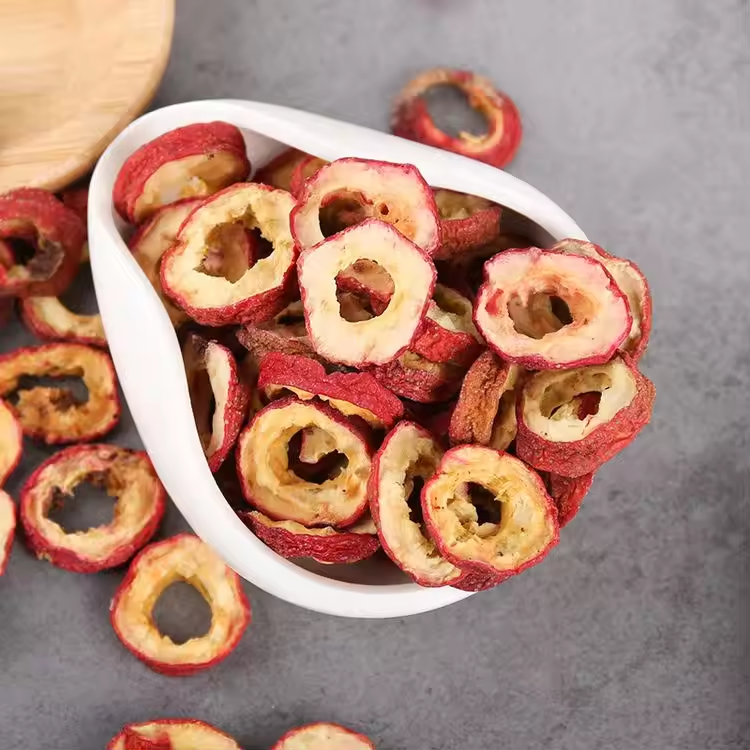
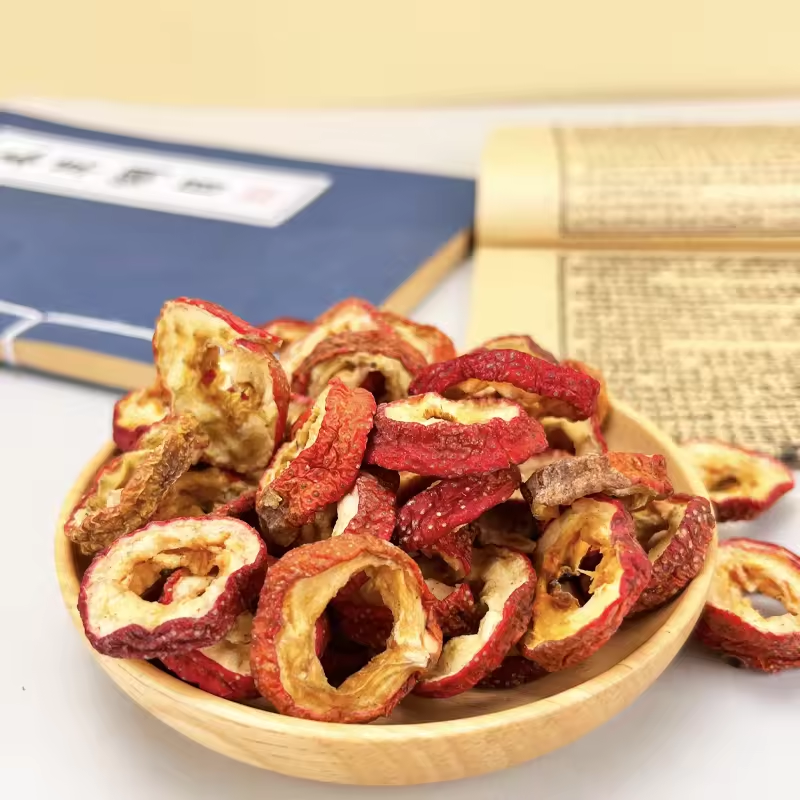

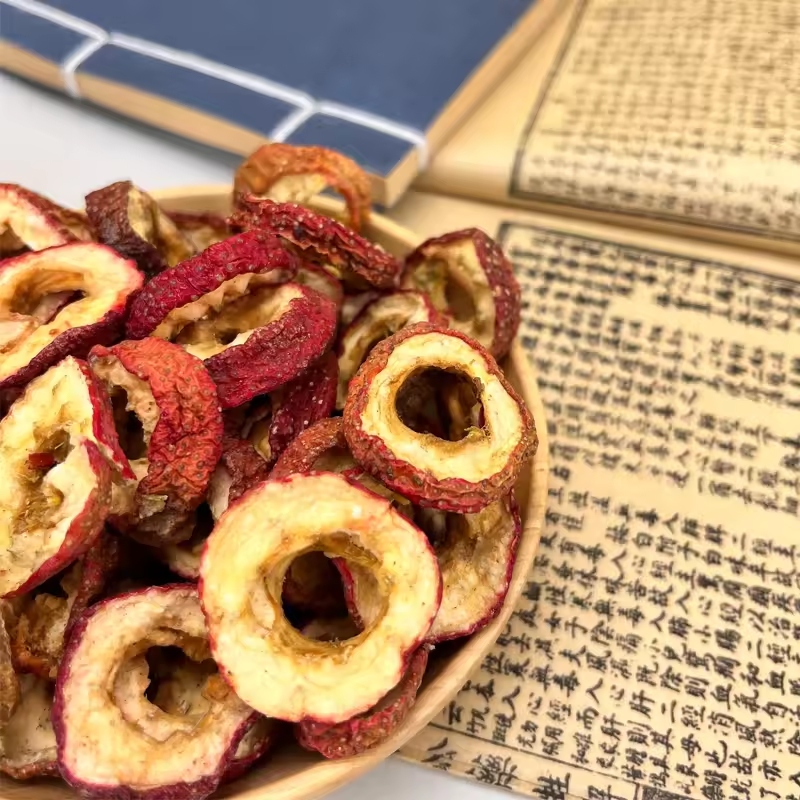
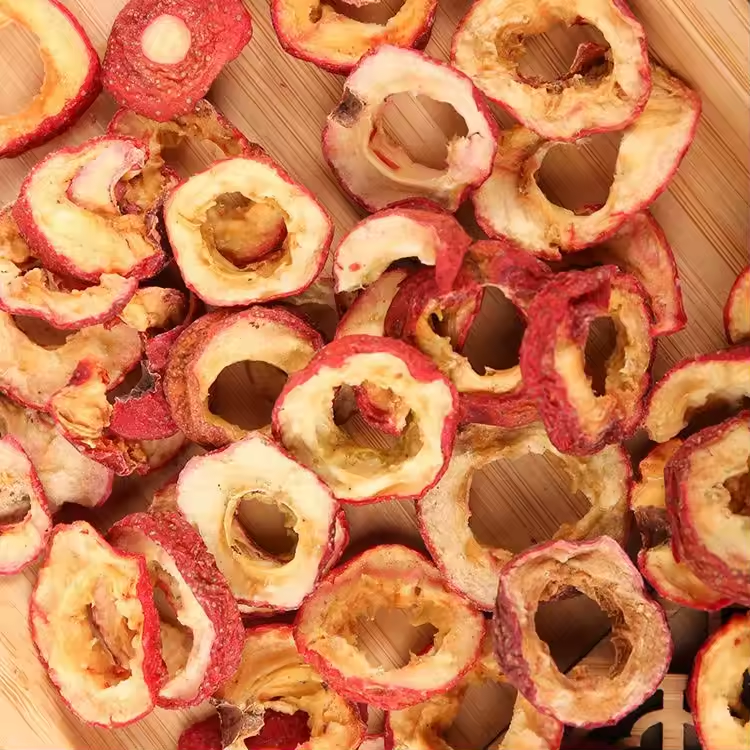

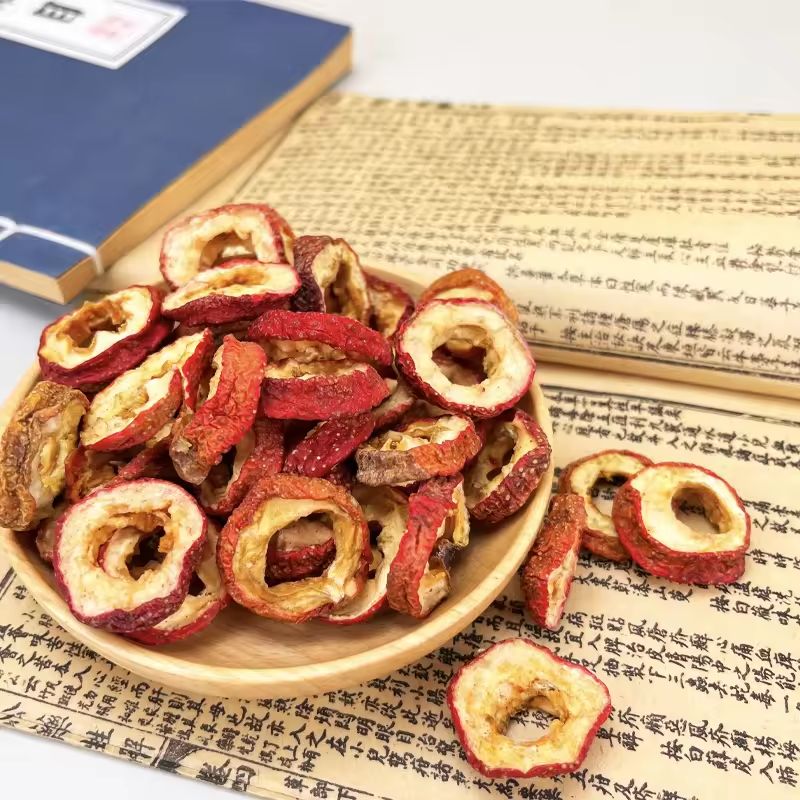
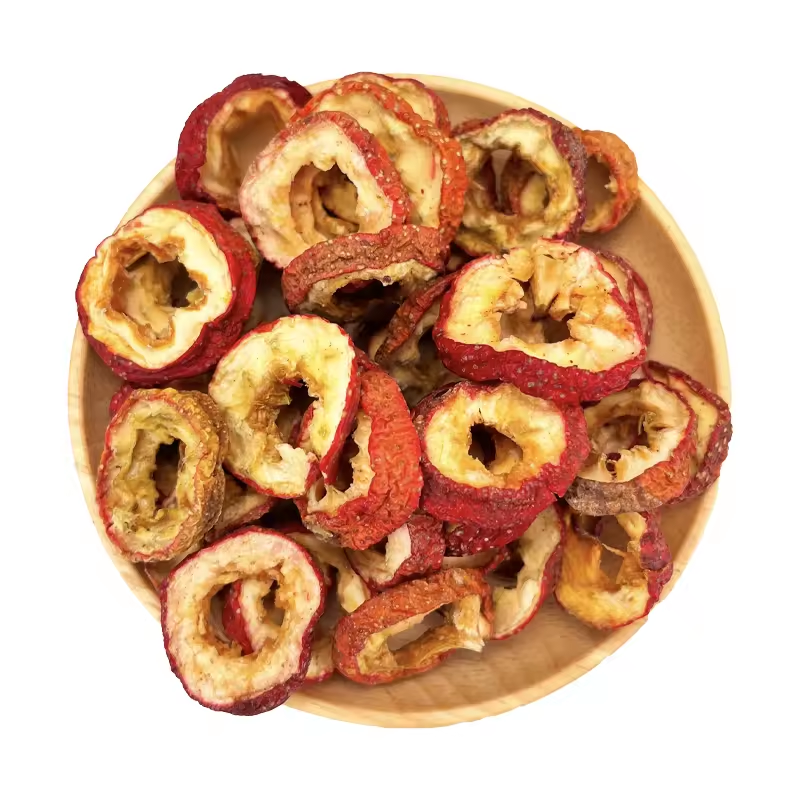
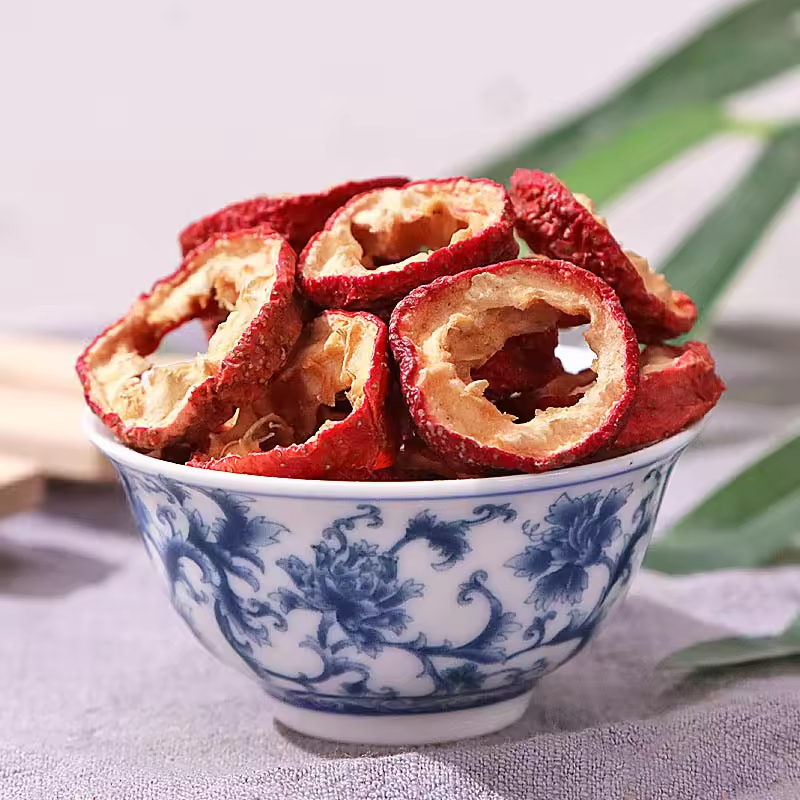



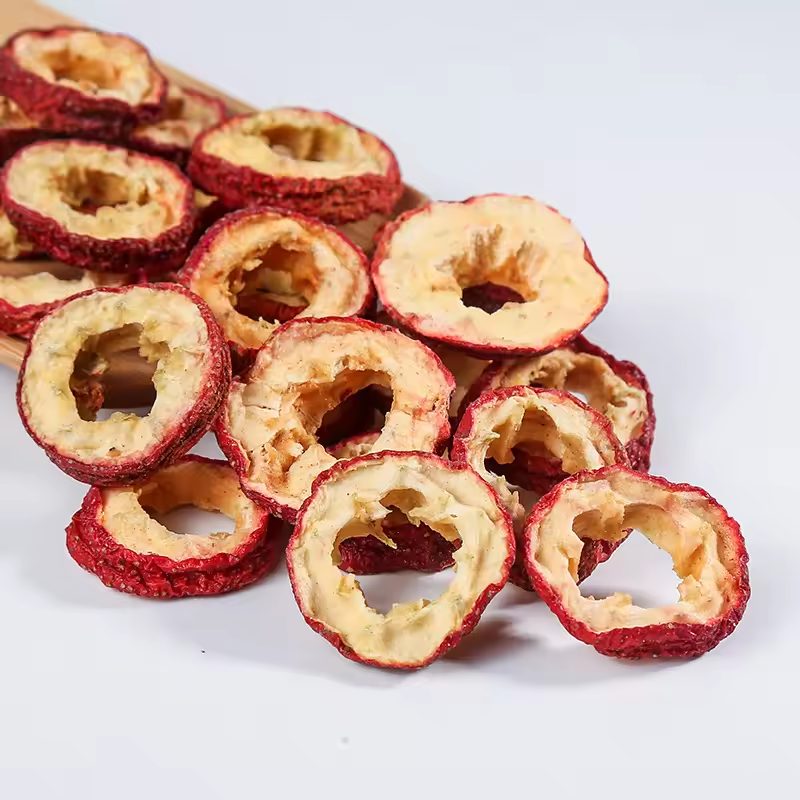
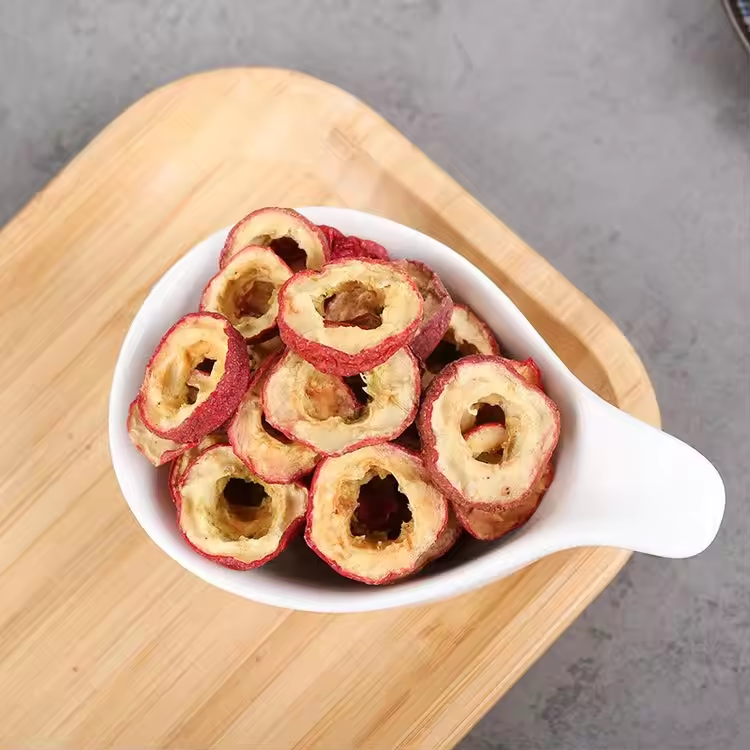
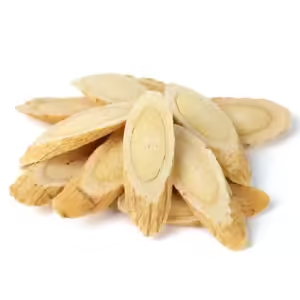

Commentaires
Il n'y a pas encore de critiques.